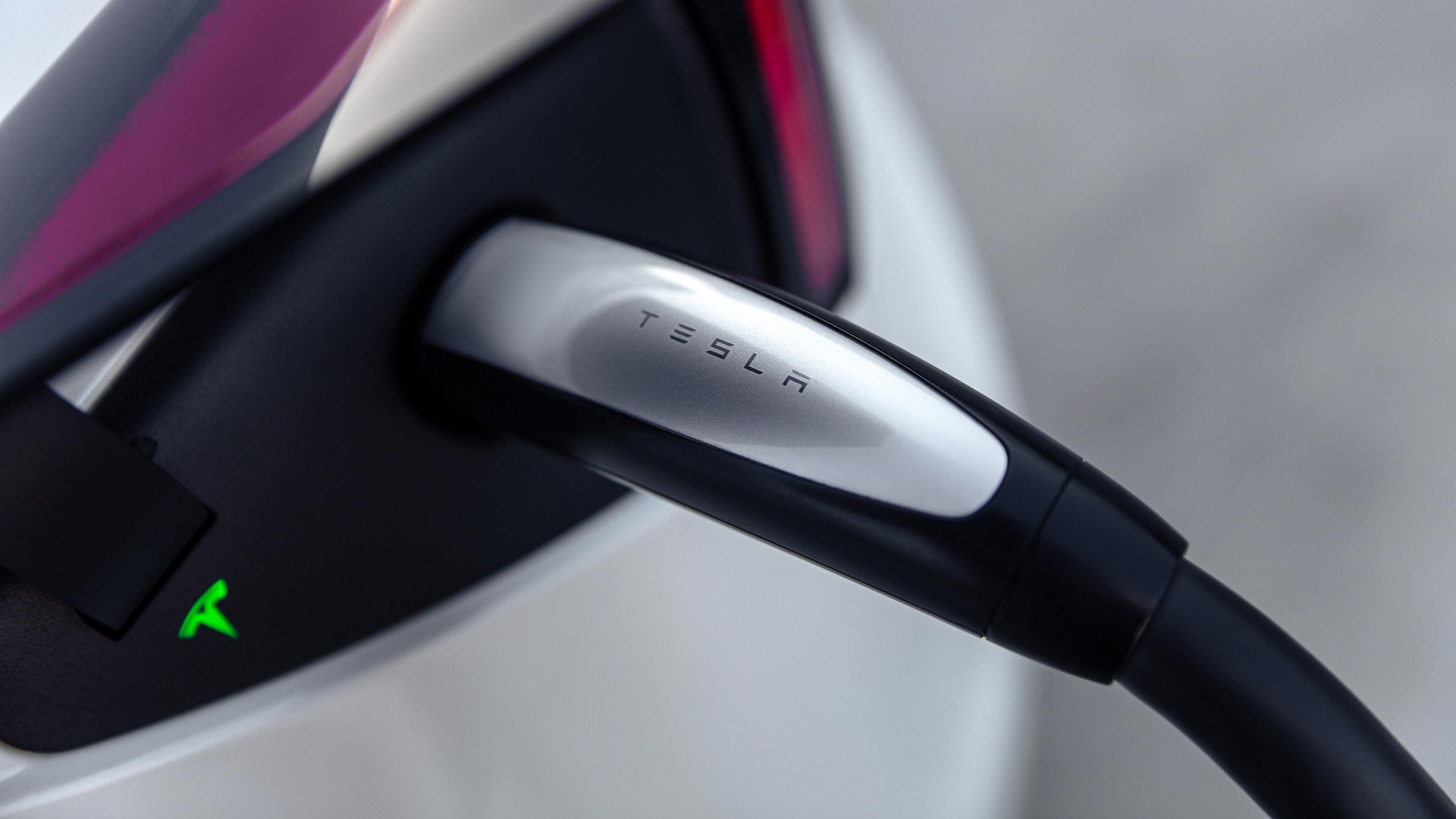

General Motors announced Thursday it will switch its EV charging connectors from industry-standard CCS to Tesla’s NACS. That means most of Detroit now favors Tesla’s standard, including Ford, opening up the Supercharger Network to legacy automakers. But aside from expanded charging networks, there’s another, overlooked consequence of automakers adopting NACS. It’s a sign that carmakers don’t think faster charging is the way forward for EVs.
Launched in 2012 with the Tesla Model S, the NACS plug predates the widespread CCS—and now succeeds it—as the primary EV connector used in the United States. Found at Supercharger stations, the NACS connector is capable of up to 250 kilowatts of DC fast-charging following the upgrade to Tesla’s Supercharger V3.

By contrast, the newer CCS was designed with loftier capabilities in mind. It’s already capable of 350 kW at some Electrify America stations, and is designed to handle up to 800 kW with an upgrade to liquid-cooled cables. That’s more than triple the power of a Tesla Supercharger V3, and more than twice what the most powerful Electrify America stalls can put out. When it arrived as a competing standard, and was adopted by most of the auto industry, it seemed only a matter of time before its superior potential would force even the pioneering Tesla to switch over. (To some degree, it has: a CCS variant is Tesla’s standard connector in Europe.)
But the line-go-up promise of faster, better charging through CCS hasn’t been widely realized. That’s because the dream of ultra-fast EV charging has stumbled over the basic questions of how to make it happen, not to mention why.

For starters, EV fast-chargers are expensive to build to begin with. While Level 1 home chargers can be installed for under $1,000, Watt Logic indicates Level 2 destination chargers easily jump into the thousands of dollars, and that Level 3 chargers of the fastest sort in use today can cost many tens of thousands of dollars. It estimates that some can run up to $75,000, likely for the quickest 350-kW units deployed in small numbers by Electrify America and Ionity.
But buildout of 350-kW stations has been limited, likely due to high cost and limitations with electrical infrastructure. Delivering the 800 kW that CCS is capable of would cost significantly more, too, all for… What, exactly? To get back on the road in 10 minutes as opposed to 20? Before you’ve even gotten your quadruple cheeseburger or 32-ounce iced coffee? At a point, making chargers more powerful offers diminishing returns, both for the charger’s operator and for the customer.
The fact is, few EVs on sale today can even make use of a 350-kW charger, never mind an 800-kW one. In fact, most EVs can only accept a maximum charge wattage within the capabilities of Tesla Superchargers’ 250 kW. It’s a sort of inverse chicken-and-egg relationship where cars aren’t built to use 800-kW chargers that don’t exist, and the chargers don’t exist because cars can’t use them.

There’s also the fact that cars that could charge at 800 kW would be more expensive to make, and that 800-kW charging still comes with some ugly tradeoffs. Let’s be clear; the entire point of DC fast-charging is to quickly get back on the road after draining your battery, like on a road trip. Batteries can be designed for deep cycles, but as a general rule, fully discharging a battery isn’t good for it.
The same goes for making a battery accept or discharge a large amount of energy, which generates extreme heat that shortens their lifespans. (For example, during full-throttle driving or DC fast-charging.) The more you heat up a battery, the more life you take out of it, and too much heat can even cause a catastrophic fire. Is the convenience of a charging stop that’s 10 minutes quicker really worth taking extra life out of the most expensive piece of your EV? For most of us, the answer is no.

With all that said, NACS may yet have fast-charging potential to rival that of CCS. Tesla has deployed a single V4 Supercharger rated for up to 615 kW, and has promised a more powerful, 1.5-megawatt (1,500 kW) Megacharger. It’s Tesla though, so you have to take its promises with as big a grain of salt as you do its claims of self-driving cars and hovering rocket-powered convertibles.
Until it happens, it’s just talk, and the reasons why it might not should now be apparent to you. They are to Ford and GM, whose switch to NACS indicates they believe access to a broader charging network is more important than maximum charging speed. One could even argue that slower, but nearer and more accessible chargers balances out slower max speeds to some degree. Besides, if the legacy automakers can access more stations without sacrificing access to faster charging that might come one day, it’s a win-win for them—and their customers.
Got a tip or question for the author? You can reach them here: james@thedrive.com